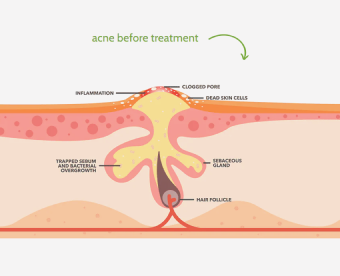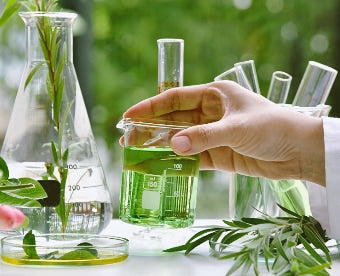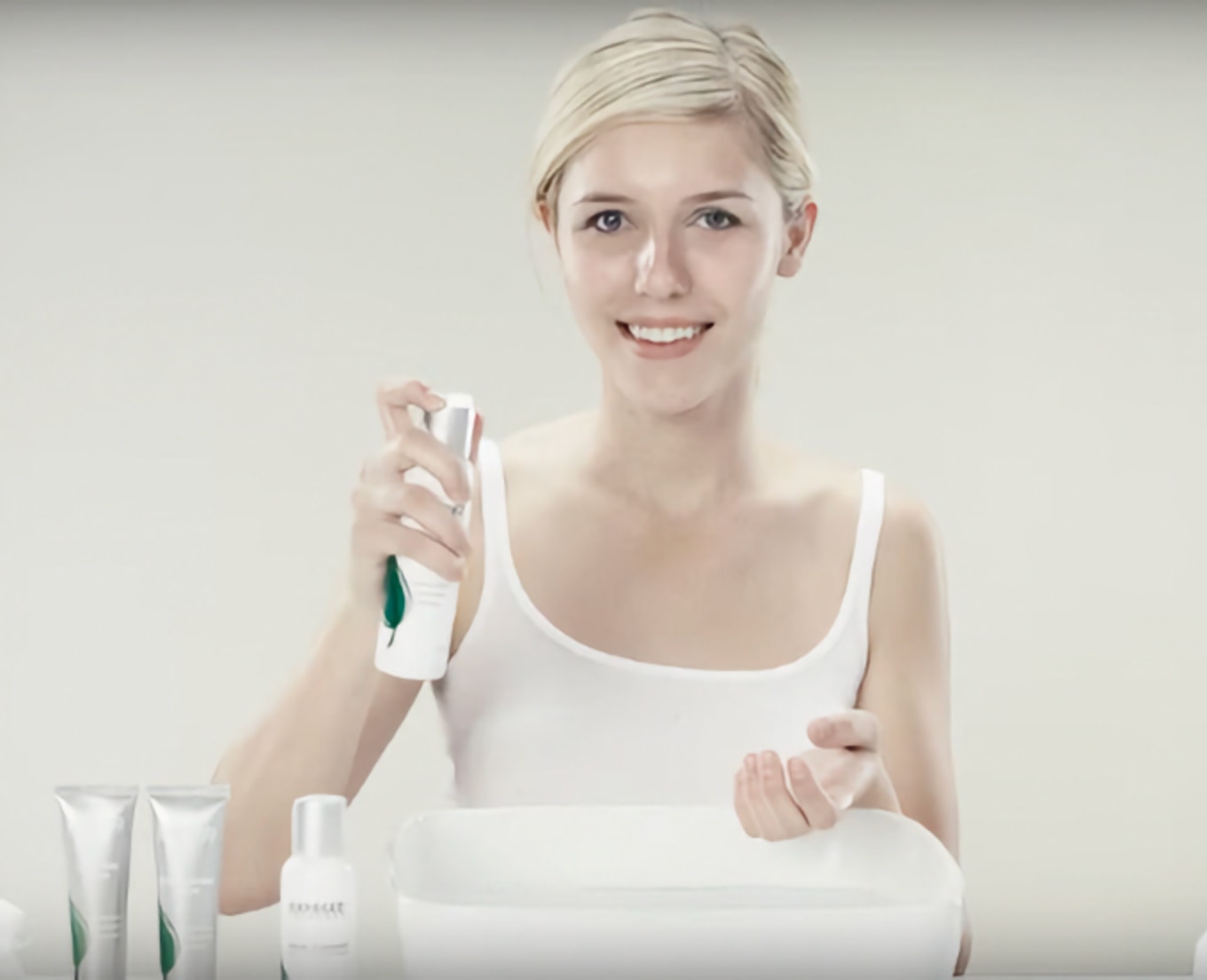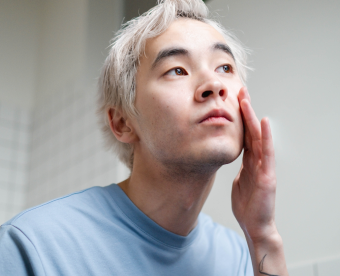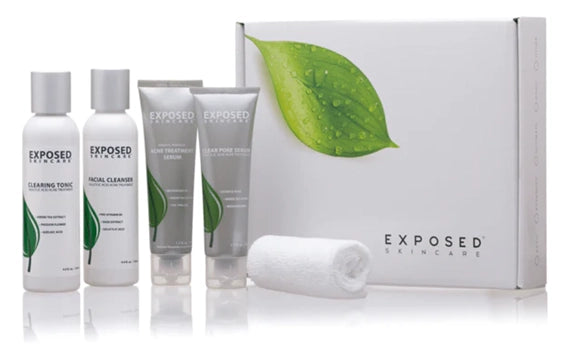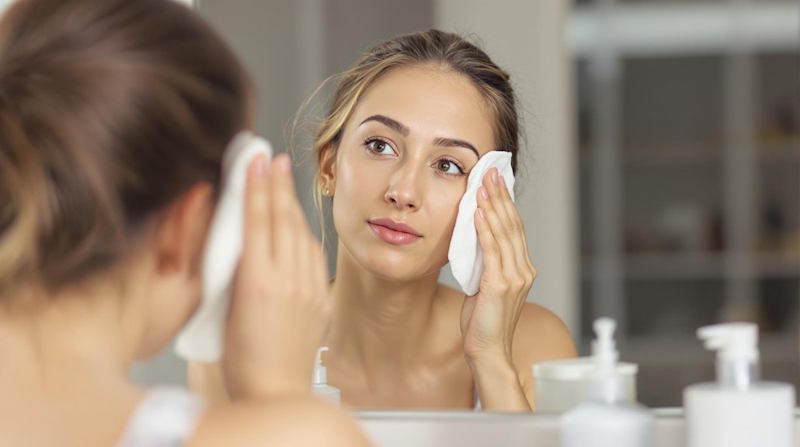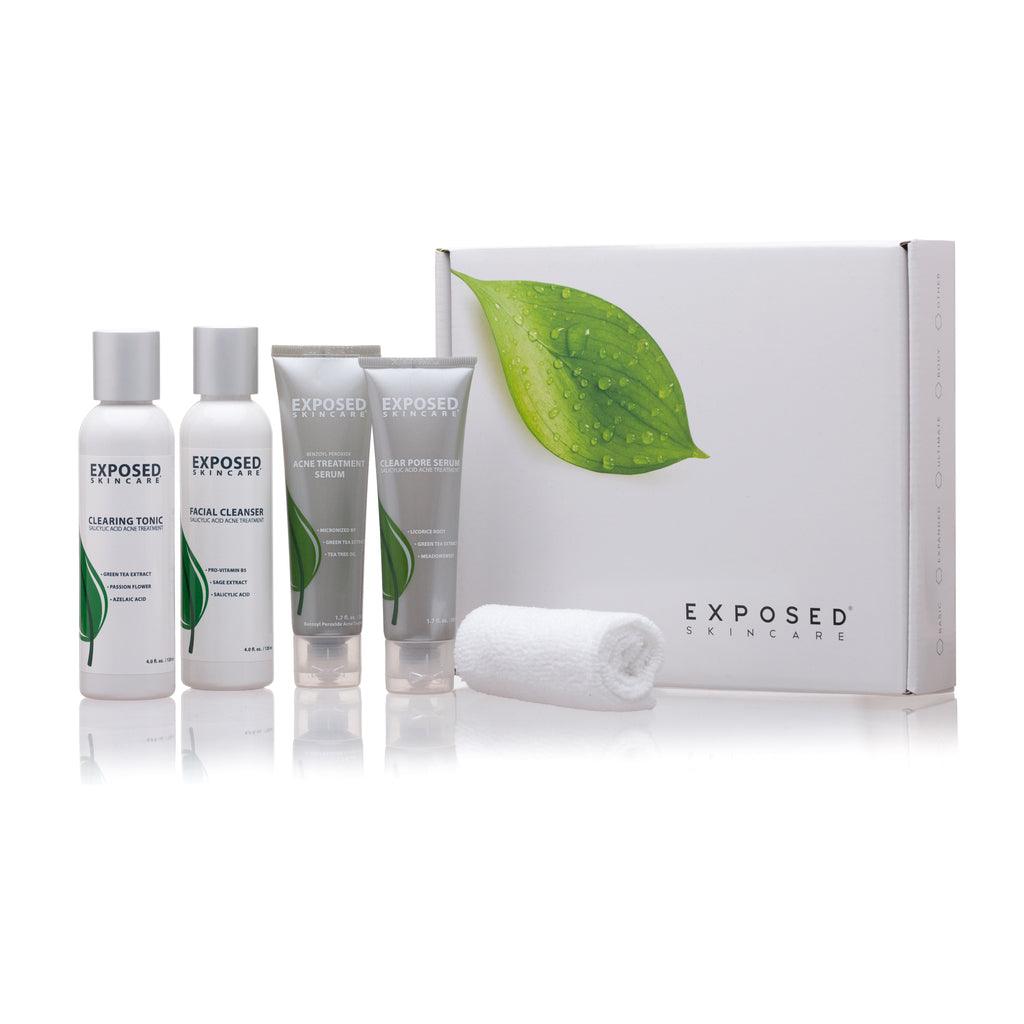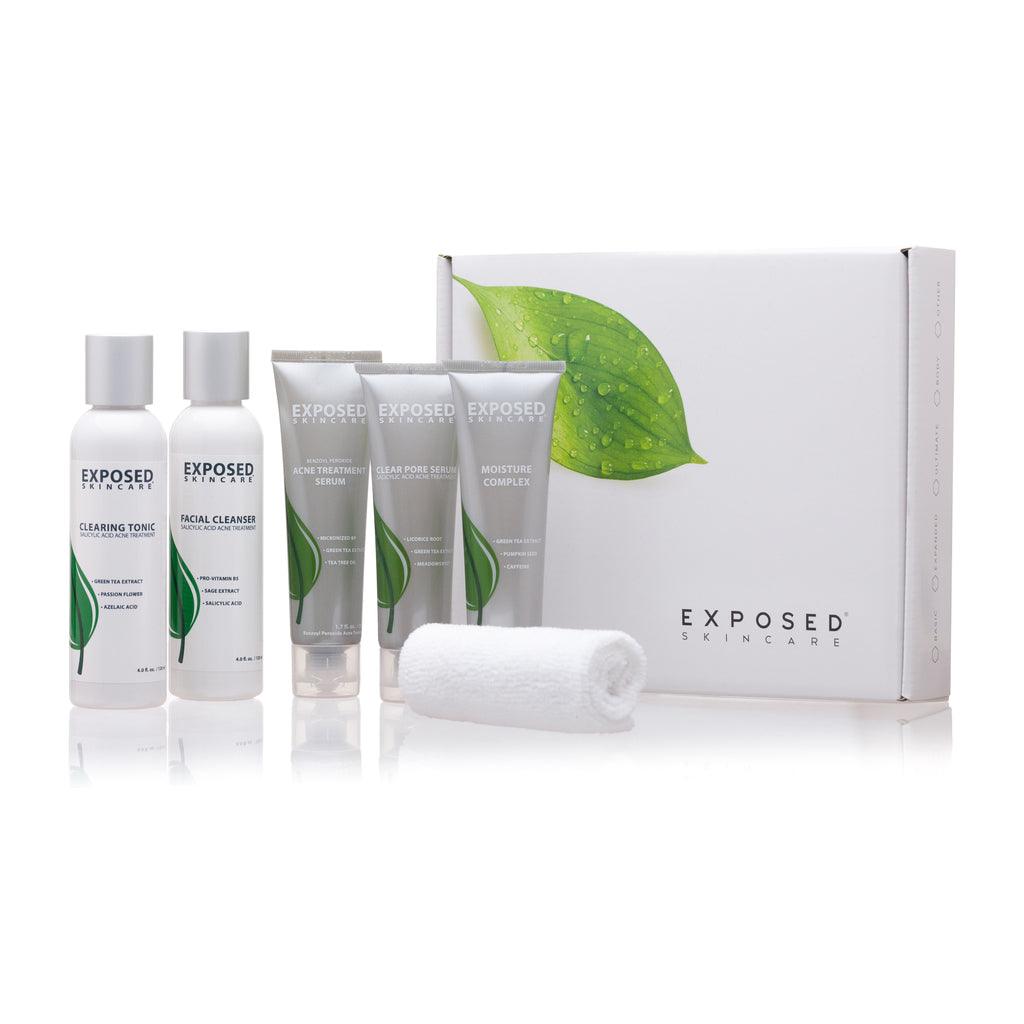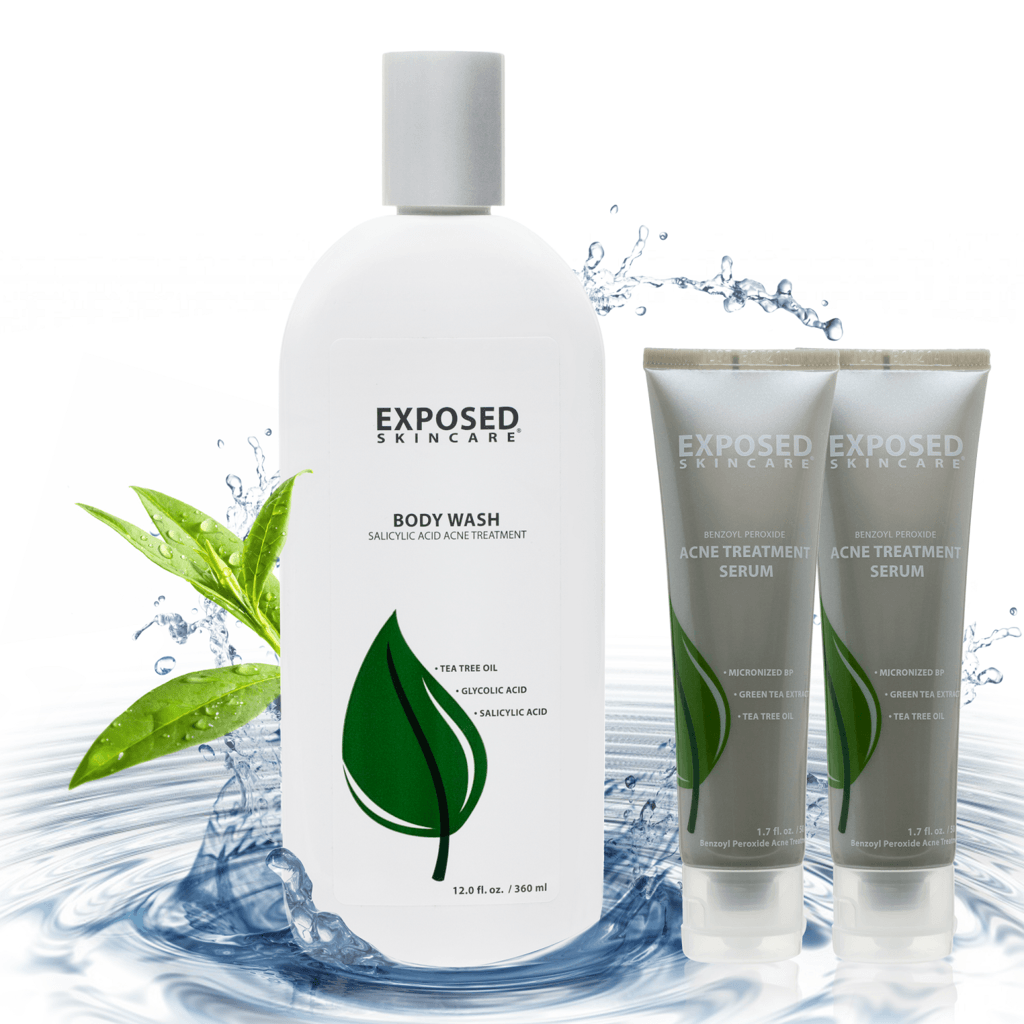In the complex world of skin health, questions often arise about the role hormones play in the occurrence of acne. An increasingly asked question is, "Does progesterone cause acne?"
To fully comprehend this intricate relationship, it's vital to explore the biological processes underlying hormonal acne, the role of progesterone, and how the menstrual cycle influences our skin. Let's unravel this intriguing connection.
Also read: How to choose the best acne treatment
Biggest Take-Aways:
-
The interplay between hormones, mainly testosterone, and progesterone, can significantly impact skin health and the severity of acne, with imbalances potentially leading to increased oil production and pore-clogging.
-
Dietary choices, especially those affecting blood sugar levels, can contribute to acne, with high glycemic foods causing rapid insulin spikes that may stimulate excess oil production.
-
Topical acids such as glycolic and azelaic acid can effectively manage acne by exfoliating dead skin cells, reducing inflammation, killing acne-causing bacteria, and preventing pore clogging.
-
Exposed Skin Care offers a comprehensive approach to managing acne, combining both scientific and natural ingredients, reducing excess oil production and acne scarring, and preventing pores from becoming clogged.

Understanding Hormonal Acne
The Nature of Hormonal Acne
Hormonal acne typically arises during adolescence when hormonal fluctuations begin. However, hormonal acne breakouts can continue well into adulthood, typically appearing along the jawline and chin. Hormonal acne is often exacerbated by menstrual cycle changes, with many people experiencing acne flare-ups during their menstrual period.
Hormonal Acne: The Progesterone Connection
So, how does progesterone cause acne? Progesterone is a hormone that plays an essential role in the menstrual cycle and pregnancy. However, when it comes to the skin, progesterone has been associated with increased oil production.
Under the influence of progesterone, Sebaceous glands may produce more sebum, a natural oil that moisturizes the skin. While sebum is crucial for healthy skin, excessive sebum can lead to clogged pores, providing an ideal environment for acne lesions to form.
Other Hormones and Hormonal Acne
Progesterone is just one piece of the hormonal acne puzzle. Excess androgens, particularly testosterone, can contribute to hormonal acne. These hormones stimulate sebum production, leading to clogged pores and acne breakouts.
Elevated androgen levels, often seen in conditions like polycystic ovarian syndrome (PCOS) and congenital adrenal hyperplasia, are frequently associated with more severe acne.

Moreover, insulin and insulin-like growth factor (IGF-1) can indirectly promote acne by increasing the production of skin cells and sebum. Conditions that elevate insulin levels, such as insulin resistance, are often linked to acne.
The Menstrual Cycle and Acne
Follicular Phase
The follicular phase of the menstrual cycle, the phase before ovulation, usually sees a decrease in acne. Estrogen levels rise during this phase, generally beneficial for skin health. Estrogen can help reduce sebum production, promote the shedding of dead skin cells, and even lower the skin's oil production.
Luteal Phase
The luteal phase follows ovulation, and this is when progesterone levels peak. As noted, progesterone can stimulate sebum production, which may clog pores and trigger acne breakouts. The luteal phase is when many people see an increase in hormonal acne breakouts.
Progesterone Levels: High, Low, and Acne
High Progesterone Levels
High progesterone levels, often seen in the luteal phase of the menstrual cycle or with certain hormonal birth control methods, can exacerbate acne. This is because progesterone stimulates sebaceous glands, leading to more sebum production.

Low Progesterone Levels
Interestingly, low progesterone can also contribute to acne. In cases of low progesterone, the body might compensate by increasing the production of other hormones, such as androgens, which can trigger acne breakouts.
Progesterone and Other Hormonal Influences on Acne
Progesterone, Androgens, and Sebum
Androgens, like testosterone, are another key player in the hormonal acne story. They can cause the sebaceous glands to produce more oil, leading to clogged pores and acne breakouts. Progesterone plays a similar role, boosting sebum production and potentially causing acne.
Progesterone and Adrenal Glands
The adrenal glands also have a role in acne. These glands produce progesterone, among other hormones. In certain conditions, the adrenal glands can produce excess hormones, such as cortisol and androgens, exacerbating acne.
Sex Hormone Binding Globulin (SHBG) and Acne
Sex hormone binding globulin (SHBG) is a protein that binds to sex hormones, including androgens and progesterone, in your bloodstream. When SHBG levels are low, more free testosterone and progesterone are available to stimulate sebaceous glands, potentially leading to acne breakouts.
Treating Hormonal Acne
Topical Treatments
Topical treatments, such as benzoyl peroxide, salicylic acid, glycolic acid, and azelaic acid, can effectively treat hormonal acne. These substances reduce inflammation, kill acne-causing bacteria, and promote the shedding of skin cells.

Oral Medications
Oral contraceptives or combined oral contraceptives are often used to treat acne. These birth control pills can help regulate hormone levels, potentially reducing acne breakouts. Other medications, like spironolactone, can block androgen receptors, reducing the effects of androgens on sebaceous glands.
Natural Remedies
Natural remedies may also be effective in treating acne. These remedies aim to maintain a healthy diet, manage stress, and support overall skin health. They include dietary changes, herbal supplements, and certain lifestyle modifications like regular exercise and sufficient sleep.
The Testosterone-Progesterone Conundrum in Acne
Acne, a notorious skin condition prevalent in teenagers and adults, is a complex condition with roots intertwined with hormonal functions. Among the cast of hormonal characters, testosterone and progesterone play significant roles, their interplay holding the potential to impact skin health significantly.
Regulation of Testosterone
Understanding the dynamics of hormonal acne necessitates a dive into the testosterone production process. Here, progesterone emerges as an unsung hero. Acting as a precursor hormone, progesterone contributes to testosterone production in the adrenal glands.
However, when the progesterone balance is disrupted due to various factors, such as stress, diet, or other health conditions, it can precipitate an uptick in testosterone production. This elevated testosterone level can, in turn, stimulate the sebaceous glands to increase oil production, thereby setting the stage for potential acne flare-ups.

Conversion of Testosterone
Testosterone can go through a complex transformation within the body. It can be converted into a more potent form known as dihydrotestosterone (DHT). DHT is particularly noteworthy because it stimulates the sebaceous glands to produce excess oil. This overabundance of oil can clog pores, forming an ideal environment for acne-causing bacteria to flourish and exacerbate acne.
The Glycemic Factor in Acne
The intricate maze of factors leading to acne also takes us down the path of diet and nutrition. In particular, the role of blood sugar levels and their impact on skin health is worth exploring.
High Glycemic Foods
High glycemic foods cause a rapid spike in blood sugar levels. These foods, including sugary drinks, white bread, and processed snacks, quickly break down into glucose, prompting the body to produce insulin to balance blood sugar levels.
However, the increased insulin can lead to elevated levels of free testosterone in the bloodstream, potentially triggering an increase in oil production and exacerbating acne.
Low Glycemic Alternatives
Conversely, low-glycemic foods, such as whole grains, most fruits, vegetables, and beans, break down more slowly in the body. This slower digestion leads to a more gradual increase in blood sugar and insulin levels, helping to maintain a hormonal balance. As a result, low-glycemic foods can help regulate blood sugar levels, thus reducing the risk of acne breakouts.
The Role of Topical Acids in Managing Acne
Navigating the sea of acne treatments can feel overwhelming, but topical acids have emerged as trusted allies in the fight against acne, particularly glycolic acid, and azelaic acid.

Glycolic Acid
Glycolic acid, a type of alpha hydroxy acid (AHA), is known in the skincare industry for its exfoliating properties. It works by loosening the bonds between dead skin cells, promoting their shedding, and preventing them from clogging pores. Along with its ability to reduce the appearance of acne scars, it also helps reduce excess oil on the skin surface, thereby decreasing the likelihood of pore blockages that can lead to acne.
Azelaic Acid
Azelaic acid, another potent player in the acne treatment game, boasts a trio of benefits: it reduces inflammation, kills acne-causing bacteria, and helps normalize skin cell turnover. Its ability to regulate keratin production, a protein that can clog pores and lead to acne, further enhances its appeal in the fight against acne. Its dual action of combating bacteria and keeping pores clear makes it a useful tool in any acne prevention arsenal.
Benefits of Using Exposed Skin Care for Acne Management
Exposed Skin Care is a comprehensive skincare system that combines scientific and natural ingredients to manage acne effectively.
This product line offers several benefits in tackling the multifaceted issue of acne:
-
Comprehensive Approach: Exposed Skin Care offers a full range of products, including a facial cleanser, clearing tonic, acne treatment serum, and clear pore serum. This comprehensive approach targets acne at different stages and from multiple angles, addressing both prevention and treatment.
-
Synergy of Ingredients: The product line uniquely blends scientific and natural ingredients. It combines salicylic acid and benzoyl peroxide, known for their acne-fighting properties, with natural extracts like green tea, aloe vera, and licorice root, which soothe inflammation and promote skin healing.
-
Prevents Clogged Pores: By promoting the shedding of dead skin cells and reducing excess oil production, Exposed Skin Care helps to prevent pores from becoming clogged, a primary cause of acne.
-
Reduces Acne Scarring: The products also help diminish acne scars' appearance, promoting a smoother, more even complexion.
Overall, Exposed Skin Care offers a comprehensive, science-backed approach to managing acne, making it a reliable choice for many.
Conclusion
It's crucial to recognize the numerous factors contributing to this widespread skin condition to understand and manage acne. The interplay between hormones like progesterone and testosterone plays a significant role in the occurrence and severity of acne, with imbalances potentially leading to elevated oil production and clogged pores.
Diet, particularly foods with a high glycemic index, can also contribute to acne by causing blood sugar and insulin levels spikes. To manage this complex issue, the use of topical acids like glycolic acid and azelaic acid has proven effective, providing benefits such as exfoliation of dead skin cells, inflammation reduction, and the eradication of acne-causing bacteria.
For a comprehensive approach to acne management, products like Exposed Skin Care offer a unique blend of scientific and natural ingredients, working synergistically to prevent pore clogging, reduce excess oil production, and minimize acne scarring. Understanding these diverse facets of acne provides valuable insights for anyone grappling with this condition and seeking a path towards healthier skin.
FAQ
1. Does taking progesterone help with acne?
While progesterone can stimulate sebum production and potentially worsen acne, certain forms of progesterone found in hormonal birth control may help regulate hormone levels and reduce acne. However, individual responses can vary.
2. Is it estrogen or progesterone that causes acne?
Both estrogen and progesterone can influence acne but in different ways. While progesterone might increase sebum production and clog pores, estrogen can reduce sebum production and help maintain healthy skin.
3. Why does progesterone cause acne?
Progesterone may cause acne by stimulating the sebaceous glands to produce more sebum. Excess sebum can clog pores, providing an ideal environment for growing acne-causing bacteria.
4. Does low or high progesterone cause acne?
Both low and high progesterone levels can potentially contribute to acne. High progesterone levels may lead to increased sebum production, while low progesterone levels may cause an increase in the production of androgens, which can also trigger acne.
5. Can hormonal treatments help with acne?
Yes, hormonal treatments, including certain types of birth control, can often help manage hormonal acne by regulating hormone levels. However, individual responses can vary.
6. Can lifestyle changes improve hormonal acne?
Definitely. Maintaining a healthy diet, managing stress, getting regular exercise, and ensuring you get enough sleep can all contribute to overall skin health and help manage hormonal acne.

